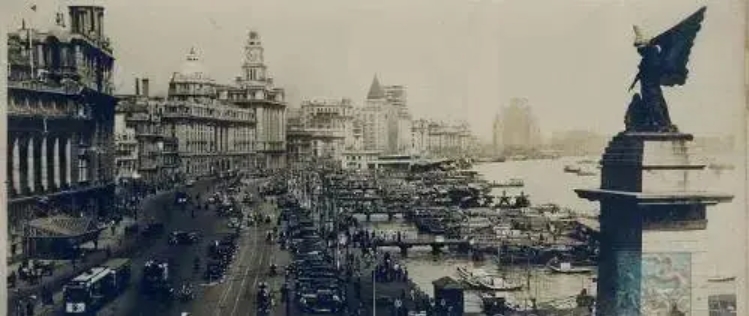Source: Funeral Culture WeChat Public Account
Original Title: [Funeral History] The Historical Evolution and Cultural Significance of Shanghai Funeral Homes (Part 1, Part 2)
Author: Shi Hongying
Funeral homes are more than just places for farewells; they represent a cultural phenomenon, serving as a tangible embodiment of funeral traditions. These establishments preserve customs, reflect societal information, express emotional undertones of a particular historical period, and demonstrate people's understanding of life and death. As society evolves, funeral homes have also undergone transformations, becoming reflections of various aspects such as social development, governance, and integration of community life.
1. Traditional Funeral Services in Old Shanghai
Before the opening of Shanghai as a treaty port in 1843, China had no modern funeral homes. The functions of a contemporary funeral home were scattered among various traditional funeral organizations, such as "Red and White Associations," "Rental Equipment Shops," "Guild Halls," and charitable "Benevolent Societies."
In early funeral activities, the bereaved families mainly relied on self-help or mutual aid from relatives and neighbors to conduct funeral rites. Due to limited manpower, families would often hire porters to help carry the coffins, a service provided by the "Red and White Associations." These groups not only assisted with setting up the mourning halls and arranging the necessary funeral utensils but also presided over the funeral ceremonies. With the increasing number of porters engaging in these activities, they gradually formed organized groups, led by a "leader" who coordinated the tasks and designated specific service areas.

▲Red and White Associations
Apart from the "Red and White Associations," the early 20th century saw the rise of "Rental Equipment Shops," which primarily offered rental services for funeral utensils like bowls, chopsticks, tables, and chairs to cater to the needs of bereaved families. These shops also offered various supplementary services such as setting up mourning tents, hanging curtains, and coordinating with the "Red and White Associations." Renowned shops like Xin Xing He Ji, Zhen Chang Company, and Shi Bao Tai became famous in Shanghai. As automobile hearses and modern funeral homes gained popularity, the traditional services of "Red and White Associations" and rental shops gradually declined, with their roles largely absorbed by funeral homes after the mid-20th century.
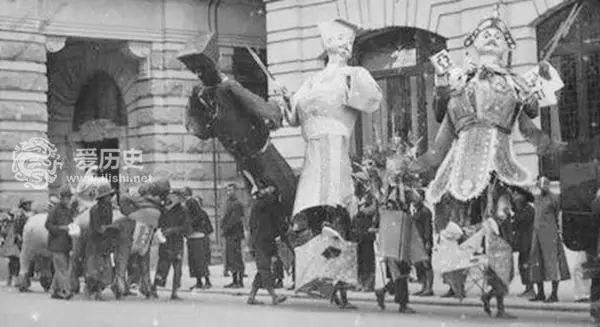
In the work Hujing Shangshi Shijing Ci: Shi Qi Dian (A Poem on Shanghai's Commercial Scene: Rental Stores) from the Guangxu era of the Qing Dynasty, there is a vivid description:
"For grand weddings and solemn funerals, the call goes out for specialized rental services. Whatever the level of extravagance desired, they can cater even to those as wealthy as kings."
From this passage, we can see that "Shi Qi Dian" (rental stores) had already begun to provide services resembling some of the functions of modern funeral homes. In essence, they were an early precursor to the modern funeral industry. However, with the advent of automobiles and the establishment of formal funeral homes, bereaved families increasingly opted for hearses and funeral home services over the traditional "Hong Bai Gang" (Red and White Clubs) and rental stores. Consequently, the business of the "Hong Bai Gang" and "Shi Qi Dian" began to decline, and their roles were eventually taken over by funeral homes after the liberation period.
The services of the "Hong Bai Gang" and "Shi Qi Dian" primarily catered to the local Shanghainese. However, they struggled to meet the needs of out-of-town families, who faced significant challenges when arranging funerals in Shanghai. This gap in service led to the inevitable emergence of guild halls or "Huiguan," which were essentially associations formed by people from the same hometown living in Shanghai.
Before the city was officially opened as a treaty port, Shanghai's development was already spurred by maritime trade. Particularly after the Kangxi Emperor lifted the coastal trade ban in 1685, merchants from various regions flocked to Shanghai. With the official opening of the port, an influx of people from different provinces and industries settled in the city. According to A Study on Population Changes in Old Shanghai by Zou Yiren, census data from 1885 to 1935 showed that over 80% of the population in the Shanghai International Settlement was non-native. By 1950, native Shanghainese accounted for only 15% of the city's population, with the majority of domestic migrants coming from the Jiangsu and Zhejiang provinces.
These migrants from all over the country, who resided in Shanghai, inevitably faced life’s final moments — death. Handling the remains of deceased non-natives posed a significant challenge. Many of these migrants wished to have their bodies transported back to their hometowns for burial in ancestral graves. To address this issue, people from the same regions established hometown guild halls in Shanghai. According to Shanghai Guide, these guild halls began to emerge during the Wanli period of the Ming Dynasty and reached their peak in the Qing Dynasty. Before the port opening, there were 16 guild halls in Shanghai. By 1911, this number had increased to 59, with an additional 20 established after the founding of the Republic of China. These guild halls were mainly located in areas such as the old city (Chengxiang), Shiliupu, East Gate, Yanghang Street, Xiangguaneng, Qipan Street, Dongjiadu, Xieqiao, and around the City God Temple.
There was a distinction between "Huiguan" (guild halls) and "Gongsuo" (public offices). The former primarily gathered people from the same hometown, while the latter was often an association of people from the same trade. However, both carried strong elements of feudal culture, playing crucial roles in the social lives of migrants by providing support for funeral arrangements, among other services.
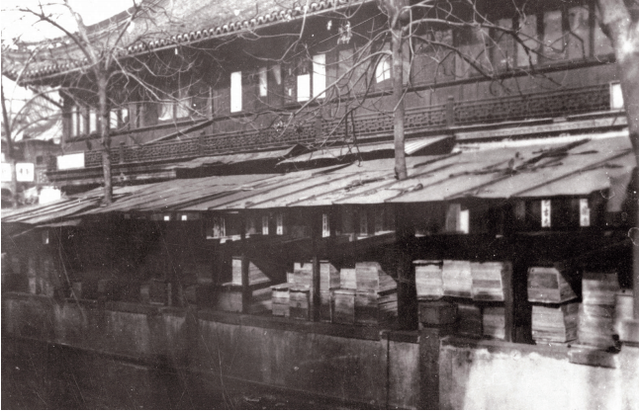
▲The "Bingshe" for Temporary Coffin Storage in Old Shanghai
The primary purpose of establishing guild halls (Huiguan) and public offices (Gongsuo) in old Shanghai was to serve the collective interests of regional or trade-based associations. Their mission was to provide a place for gathering in life and to ensure proper funeral arrangements in death. These organizations mainly handled funerary services for fellow townspeople who had passed away in Shanghai. Their offerings included rituals, temporary coffin storage (寄柩), and burial arrangements. The core service provided by these guild halls was temporary coffin storage, but they also assisted with coffin donations, funeral transportation, charity education, and emergency relief.
In addition, these guild halls often established bingshe (temporary morgues) and charity burial grounds. A historical account describes the setup:
"Once the morgues were established, they were divided into east and west wings, with separate areas for men and women. These spaces were used for rituals and seasonal ceremonies. The remaining land was allocated for charity graves, providing a final resting place for travelers who died far from home, establishing an orderly foundation for these activities."
One of the most prominent guild halls was the Siming Gongsuo, founded by notable Ningbo merchants and scholars residing in Shanghai: Qian Sui, Fei Yuan-gui, Pan Feng-zhan, and Wang Zhong-lie. The Siming Gongsuo was located in the area between today's Baxian Bridge to the east, Renmin Road to the west, and Huaihai Road to the south, near the Xiaobeimen area. Construction began in 1797 and was completed in 1803.
Later, this guild hall fell within the boundaries of the French Concession. The French authorities were strongly opposed to the presence of graves within the Siming Gongsuo, considering them to be potential sources of infectious diseases. In 1874, the French Municipal Council decided to construct a road through the Siming Gongsuo grounds. This proposal was met with intense opposition, as it was seen as a grave disrespect to the deceased. The dispute escalated sharply, leading to the tragic Siming Gongsuo Massacre on May 3, 1874, when tensions between the two parties reached a breaking point.
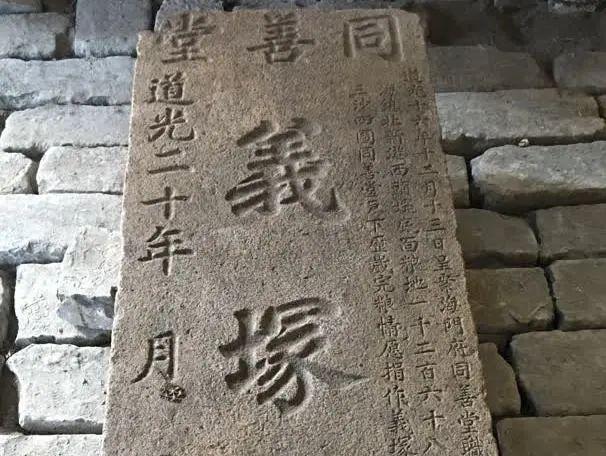
▲The Philanthropic Cemetery Stele of Tongshantang During the Daoguang Era
In addition to the guild halls (Huiguan) and public offices (Gongsuo), philanthropic societies and charitable halls (Shantang) emerged during the Ming and Qing dynasties. These organizations were often funded and established by local wealthy merchants and gentry, with their primary mission being to provide free funeral assistance to families unable to afford burial expenses.
According to the Songjiang Prefecture Gazetteer (嘉庆《松江府志》) of the Jiaqing era, several charitable halls were documented, including Hualou Tongshantang, Huating Tongshantang, Jinshan Tongshantang, Shanghai Tongshantang, Nanhui Tongshantang, Huating Tongrentang, Jinshan Tongrentang, Shanghai Tongrentang, and Qingpu Tongrentang.
Among them, Tongrentang was notable for its focus on supporting widows and the elderly. It provided various types of financial aid related to funerals, such as burial fees, coffin costs, grave maintenance fees, and expenses for temporary morgues (棚厂)—facilities for handling bodies found dead on the streets or drowned. In 1831, these funeral-related expenses accounted for 36.5% of the total expenditures of Tongrentang, decreasing slightly to 35% by 1849. Eventually, in 1855, Tongrentang merged with another charitable society, Fuyuantang.
Additionally, there were other charitable funeral organizations, such as Pushan Shanzhuang, established in 1913 with funding from Shanghai merchants Wang Junsheng and Li Guqing. Located in Zhabei's Sun Temple area (now the site of Zhabei District Court and Zhabei No. 10 Middle School), Pushan Shanzhuang focused on charitable efforts to address the funeral needs of impoverished people. It quickly alleviated the pressing burial issues in Shanghai, gaining significant social influence. Before long, it grew to become the largest charitable organization in Shanghai, providing essential funeral services and relief to the needy.
2. Establishment and Operation of Funeral Homes in Modern Shanghai
(1) The Emergence and Development of Funeral Homes in Early Modern Shanghai
According to Commercial Monthly (Vol. 19), in the late 19th century, a British businessman named Whelan established the Songmao Foreign Company in Shanghai. However, this company mainly catered to Western clients, focusing exclusively on Western-style funeral services. As a result, it failed to attract interest from the local Chinese population and did not evolve into a modern funeral home.
In 1924, an American named Scotta founded the Universal Funeral Home, marking the establishment of the first funeral home in Shanghai. However, due to significant differences in cultural customs, the Chinese population showed limited interest and engagement with this service.
It wasn't until 1933 that the first Chinese-owned funeral home was established in Shanghai. The initiator was Mr. Tao Jiayao, who had previously served as the Commissioner of the Changlu Salt Transport Office in Jiangxi and as the Governor of Jiangxi Province. Together with his two sons, Mr. Tao founded the China Funeral Home on Huashan Road in Shanghai. This marked the beginning of modern funeral services run by Chinese nationals.
In 1934, another notable establishment was created by a Cantonese businessman named Chen Qifen, who founded the Central Funeral Home. This further contributed to the growth of the funeral industry in Shanghai.
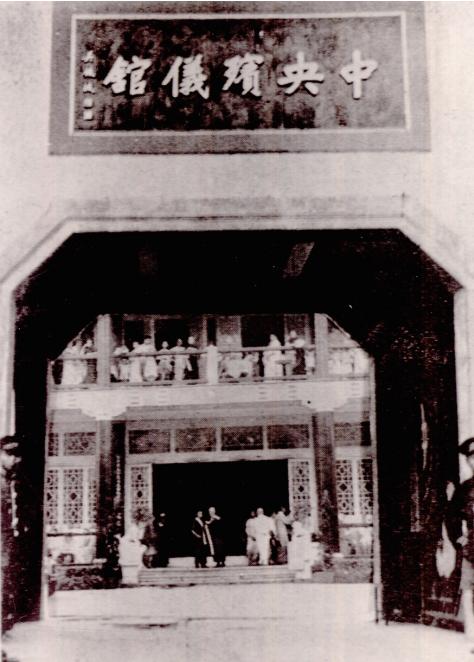
▲Central Funeral Home
In its early days, the funeral home industry was not particularly developed. However, the outbreak of the Second Sino-Japanese War brought significant changes. The three-month-long Battle of Shanghai drastically altered the city's spatial dynamics, forcing over a million residents to seek refuge in the concession areas south of the Suzhou Creek. During this "Isolated Island Period," the population in the concessions surged, resulting in overcrowded living conditions, poor sanitation, and a sharply increased mortality rate.
Given the limited resources and conditions of the time, most people turned to funeral homes to handle funeral arrangements. This rising demand led to the establishment of numerous new funeral homes, such as Le Yuan, World, Da Zhong, Da Hua, Wan An, White Palace, Fairness, Gongshun, Zhonghua, Bao'an, and Lianyi Mountain Villa. The funeral industry in Shanghai became highly prosperous, marked by intense competition and rapid, sometimes unbalanced, growth.
One of the pressing issues of that period was the shortage of storage for coffins due to the surge in deaths. While traditional guild halls and associations could offer coffin storage, most of these buildings were destroyed during the war. Even those that survived were often located in remote suburban areas with inconvenient transportation.
Recognizing this business opportunity, several funeral homes began adding coffin storage facilities (referred to as "Bing She") to address the urgent need for convenient and nearby coffin storage. This solution not only helped grieving families but also contributed to improving local sanitation.
Additionally, the issue of repatriating coffins to their hometowns became prominent for families from other regions. In response, several businesses established dedicated coffin storage facilities. One of the earliest examples was the Guotai Coffin Repository in Wangjiameng on Jing'an Temple Road, Daxilu. Due to its successful operation, similar facilities were quickly set up by competitors, including Guotai Wan'an, Yong'an on Haige Road, Pu'an on Kaixuan Road, and Bao'an on Changping Road.

▲ The Funeral Procession Outside the Shanghai Racecourse During the Republican Era
Initially, only the wealthy elite, including bureaucrats and comprador class, opted for funeral services at funeral homes. The average citizen typically preferred to handle funeral arrangements through guild halls or associations. This situation was primarily due to two reasons:
- Traditional Beliefs: The general public was still hesitant to accept the concept of modern funeral homes due to traditional views on death and funerals.
- High Costs: The expenses associated with funeral homes were often beyond the financial means of ordinary people.
To cater to the needs of regular citizens, a wave of affordable funeral homes emerged, led by establishments like Shangtian Funeral Home and Tongsu Funeral Home. These economic options made it easier for common families to access funeral services. With the booming growth of the funeral home industry, various types of funeral homes with different business models started to appear. According to the Shanghai Civil Affairs Chronicle, by the eve of Shanghai's liberation, there were over 30 large and small funeral homes operating in the city.
(2) Structure and Operations of Funeral Homes
As key facilities for funeral activities, funeral homes performed various essential functions. Although the specific organizational setups varied across different funeral homes, their fundamental structure and services were largely similar. For instance, consider the setup of China Funeral Home:
- The funeral home had its own fleet of vehicles, including specialized hearses for transporting bodies, trucks for carrying coffins, and black boxcars designated for corpse retrieval.
- After a death was reported and a death certificate was issued by the police, the deceased's body would be transported to the funeral home's technical room. Here, the body was placed on a magnetic table resembling a surgical bed, where it was immediately cleaned and disinfected with chemicals.
- If the deceased's family had not yet arrived or deemed it necessary, the body would undergo blood drainage and embalming to prevent decomposition, allowing the family time to gather for a final farewell.
- Following this, the body was transferred to a makeup room, where the deceased was dressed in burial clothes, shoes, and groomed (hair and face). A special makeup was applied to give a more lifelike appearance.
The funeral home featured four main ceremonial halls for hosting services:
- Hall of Reverence (崇礼堂)
- Hall of Respect (崇敬堂) - The grandest and most expensive.
- Hall of Frugality (崇俭堂) - This included five smaller halls intended for lower-income families.
- Hall of Reflection (崇思堂)
The entire funeral process, from body transport, makeup, and embalming, to the service in the ceremonial hall, selection of the coffin, and burial, was offered at a comprehensive fee of 5 million yuan per deceased.
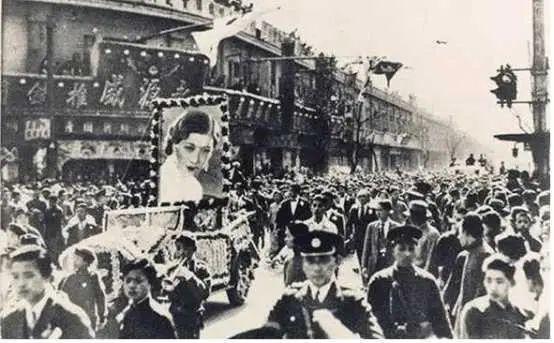
▲ Scene of Ruan Lingyu’s Body Transfer in Shanghai, 1935
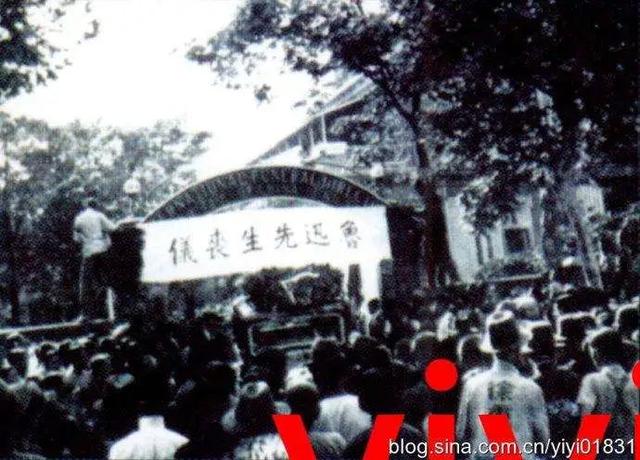
▲ Scene of Mr. Lu Xun's Funeral in 1936: In Front of the Shanghai International Funeral Home
3. Standardized Governance of Funeral Homes in Modern Shanghai
In modern Shanghai, with the establishment and development of funeral homes, both the foreign concessions and the Chinese-controlled areas implemented certain management and regulatory measures.
(1) Management of Funeral Homes in the Foreign Concessions
On March 21, 1935, the Municipal Council issued Bulletin No. 4568, which outlined regulations for funeral homes. These regulations stipulated that the floor and walls of mortuaries should be no less than seven feet in height and must be covered with impermeable materials. Windows were required to be fitted with wire mesh screens to prevent flies from entering. The platform used for the application of preservatives to the body had to be made from impermeable materials.
In terms of handling the pollutants generated by dead bodies, they had to be immediately disposed of into gutters. When dealing with bodies of those who died from reportable diseases, such as typhoid, paratyphoid, spotted fever, smallpox, measles, scarlet fever, diphtheria, influenza, plague, tuberculosis, cholera, dysentery, relapsing fever, meningitis, gangrene, rabies, schistosomiasis, encephalitis lethargica, choleraic diarrhea, or leprosy, the body had to be immediately reported to the Director of the Health Bureau, and all procedures had to be performed under strict sanitary conditions, with appropriate protective clothing.
With the outbreak of the Sino-Japanese War, Shanghai's population surged, prompting both the International Settlement and the French Concession authorities to tighten their management of funeral services. The authorities took action against those operating funeral homes in unauthorized areas, especially those with poor facilities that posed environmental or health risks, as well as those who accepted bodies without reporting them. Funeral home operators were summoned for discussions, instructed to follow registration procedures, and subjected to stricter supervision.
(2) Management and Regulation of Funeral Homes by Chinese Authorities
In the Chinese-controlled areas, rules were also implemented to standardize the operations of funeral homes. In 1932, the Shanghai Municipal Government issued the "Regulations for the Management of Funeral Homes in Shanghai" (consisting of fourteen articles). These rules covered a range of specific issues, such as the submission of building plans for approval, payment of registration and stamp taxes, restrictions on disturbing neighboring areas, limits on the number of coffins stored in each mortuary, disinfection requirements, prevention of infectious diseases, and prohibitions on chanting or wailing after 8 p.m.
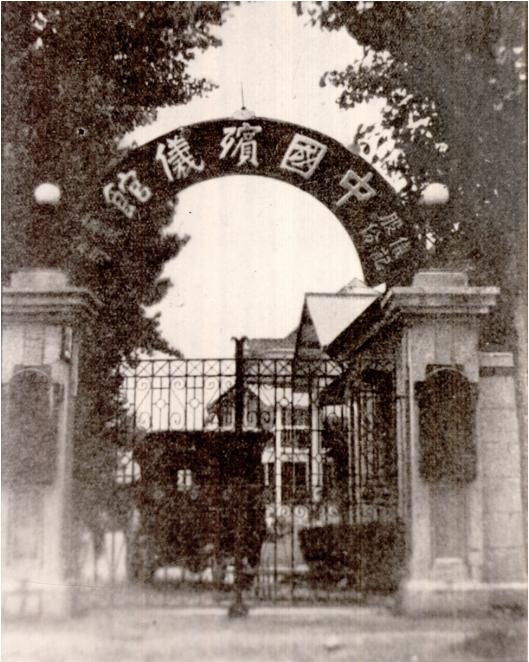
▲The Main Gate of the China Funeral Home
Additionally, administrative and economic measures were implemented to prevent funeral homes from disrupting social life. In 1934, the Shanghai Municipal Government issued Order No. 982, which required the China Funeral Home located on Haige Road to relocate in order to prevent continuous noise disturbances that affected the tranquility of nearby residents. At the same time, to prevent funeral homes from arbitrarily raising their prices and destabilizing society, economic measures were also taken. In 1944, the Shanghai Special Municipal Government issued a directive to investigate price hikes in funeral homes. Funeral homes that imposed higher fees, particularly those increasing the cost of coffin storage, were to be shut down.
Furthermore, a funeral industry association was established. With the outbreak of the Sino-Japanese War, the number of deaths and casualties rose rapidly, and issues such as accumulated coffins, bodies found in public spaces, and improper burial practices became a major challenge for urban management in Shanghai. Despite efforts by the Nationalist Government to address these issues, progress was limited. In response, the Shanghai Special Municipal Funeral and Coffin Storage Association was founded on December 20, 1942, to strengthen the management of the funeral industry. The association implemented relevant rules and regulations to guide the development of the industry. After the liberation, this organization was restructured into the "Shanghai Funeral and Coffin Storage and Burial Industry Association." The association divided its members into five categories based on their services: funeral, coffin storage, coffin transport, cemeteries, and cremation. Additionally, the members were further grouped into the funeral and coffin transport team and the cemetery and cremation team, while also handling all funeral supplies.
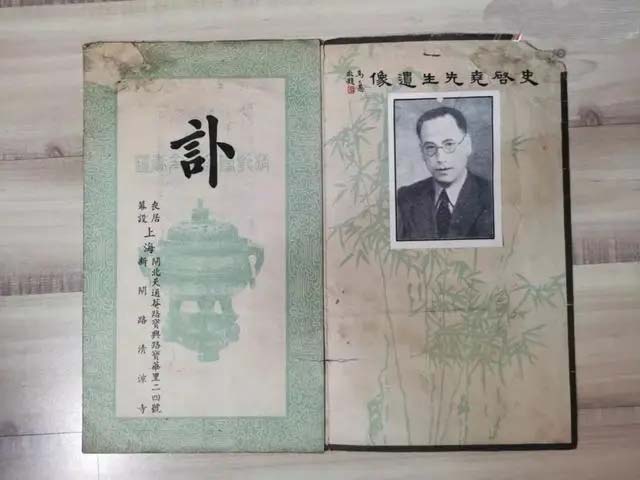
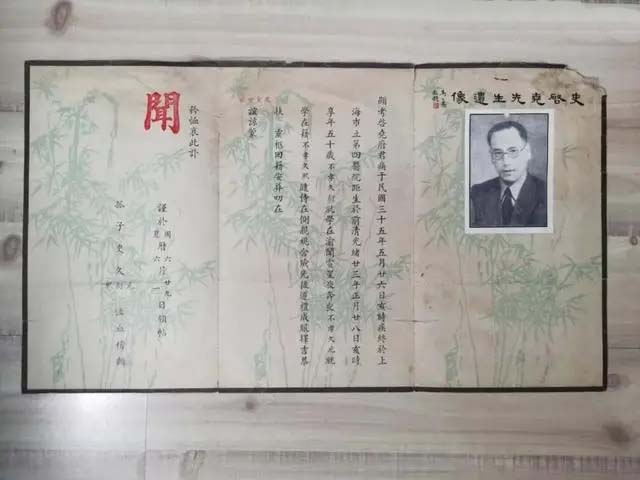
▲Obituary of Mr. Shi Qiyao, who passed away in Shanghai in 1944
3. New Developments in Funeral Home Governance in Modern Shanghai
(3) New Developments in Funeral Home Governance After the Liberation of Shanghai
On May 27, 1949, Shanghai was liberated, marking a new era in the development of the city's funeral industry. Initially, the People's Government introduced a series of regulations and measures to improve environmental hygiene by clearing accumulated coffins and makeshift storage facilities in funeral homes and other establishments. Before the liberation, due to wartime conditions, numerous coffins had piled up in venues like guild halls, villas, temporary storage sheds, coffin depositories, funeral homes, and family ancestral halls. Many of these coffins had been stored for so long that the wood had decayed, emitting foul odors that severely polluted the environment and greatly affected the daily lives of the residents.
In July 1949, the Shanghai Health Bureau implemented the "Fifth Step for Clearing Accumulated Coffins," followed by the "Supplementary Measures for Clearing Accumulated Coffins in Shanghai" in the following year. On August 15, a "Temporary Measure for Reducing or Exempting Funeral Transportation Fees for Clearing Accumulated Coffins" was also issued. In 1950, the "Shanghai Funeral Home Management Regulations" were promulgated. On October 19, 1951, the Health Bureau held a meeting with district governments, including those from Songshan, Zhabei, and Changning, as well as coffin depositories like Pusan Villa, Siming Guild Hall, and Zheshao Yongxitang, alongside the Public Security Bureau’s administrative division. They decided to form a supervision team comprising officials from the Public Security Bureau, Civil Affairs Bureau, Health Bureau, and the Shanghai Rescue Association to oversee the clearing of accumulated coffins. By the end of 1952, they had removed 209,708 bodies from 19 suburban areas, 5 construction sites, and 2 Muslim cemeteries, freeing up about 1,000 acres of land. From June 1949 to the end of October 1954, 129,248 exposed bodies were cremated, and 34,382 were buried, totaling 163,630. This effort successfully addressed a long-standing urban issue, significantly contributing to the revitalization of the city.
Next, the government reorganized funeral home structures to optimize their functions. In June 1949, the Shanghai Health Bureau took over the funeral management office from the old regime. On December 7, 1953, the Municipal Civil Affairs Bureau, under orders from the city’s military control committee, took over the Universal Funeral Home, making it the first publicly-operated funeral home in Shanghai. By 1953, around 10 funeral homes had ceased operations, while 13 private funeral homes were still running. In 1954, the Civil Affairs Bureau took over the funeral department of Sijing Guild Hall and established Sijing Funeral Home the following year. In the same year, employees of the Yongxi Hall at Zheshao Guild Hall independently founded the Yongxi Funeral Home, which became publicly operated in 1956. During the social restructuring period, the Funeral Management Office initiated a public-private partnership with several private funeral homes, crematoriums, and temporary storage sheds. In 1956, facilities like the Jian'an, Hongqiao, and Tonghai storage sheds were merged into Anle Funeral Home. The Tongren Fuyuan Hall and Pusan Villa were combined into the Shanghai Funeral Services Station.
(4) Rapid Development During the Reform and Opening-Up Period
In 1978, with approval from the Municipal Government, the Funeral Management Office was re-established. In 1979, the office was dissolved again, and its functions were integrated into the Third Division of the Social Affairs Department of the Municipal Civil Affairs Bureau. In October 1981, the City’s Political and Legal Affairs Committee approved the re-establishment of the Funeral Management Office. In August 1984, the office was renamed the Shanghai Funeral Services Administration. At a city-wide funeral services conference held by the Municipal Civil Affairs Bureau in April 1982, there was a strong call to abolish outdated funeral customs and promote frugal funeral practices.
Entering the 1990s, Shanghai's funeral industry entered a new phase. In 1994, Yishan Funeral Home was built to handle the cremation of bodies after services at Longhua Funeral Home. To standardize funeral management, the Municipal Government issued the "Shanghai Funeral Management Implementation Measures" in 1986 and the "Shanghai Cemetery Management Measures" in 1989. The "Shanghai Funeral Management Regulations," passed by the Municipal People’s Congress in 1997, were implemented in 1998. In August 1998, the Shanghai Funeral Services Administration separated its administrative and operational functions, leading to the establishment of the Shanghai Funeral Services Center. The center expanded its service offerings by setting up the Baolong Cremation Machinery Research Institute, the Body Preservation Research Institute, and the Funeral Culture Research Institute. It also launched a funeral supplies production and distribution company and a Feisi Sea Burial Services Company, gradually transitioning towards modernization.
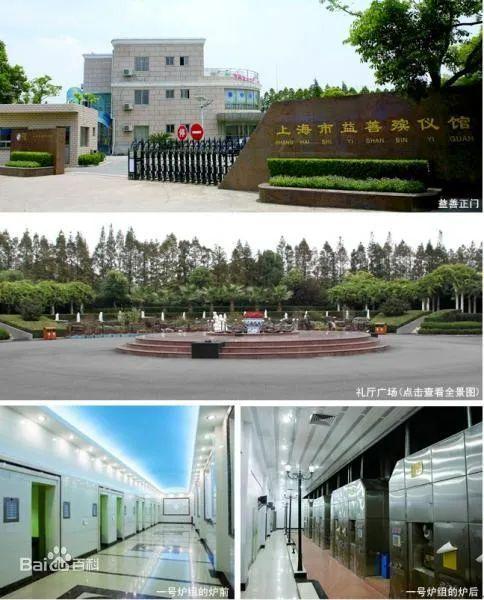
▲ The Yishan Funeral Home in Shanghai was a key project by the Shanghai Municipal Government aimed at relocating the cremation functions of the city’s two major funeral homes, Longhua and Baoxing. In 1987, then-Mayor Jiang Zemin personally approved the establishment of Yishan Funeral Home, writing, "Please have the Municipal Planning Commission and Finance Bureau review and expedite this matter. Although the amount is not large, it has a significant impact on the residents."
On July 1, 2004, with the official implementation of the Administrative Licensing Law, the civil affairs department relinquished its approval authority over the manufacturing and sale of funeral supplies. As a result, private capital gradually entered the production and sale of these products. With the marketization of the funeral industry, funeral homes began to face new opportunities and challenges...
[Appendix]
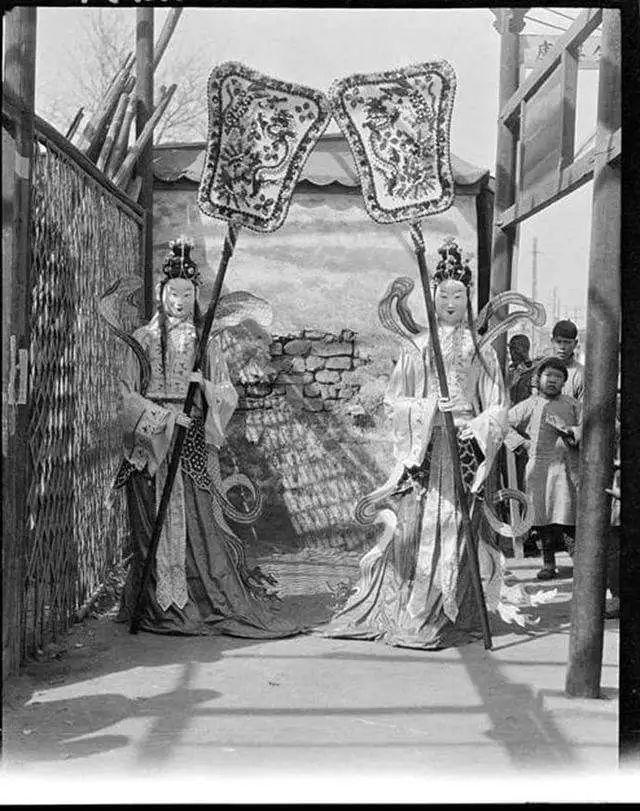
▲Paper Figures at a Funeral in Beijing (1924-1927)
(Photographer: Sidney David Gamble (1890-1968), American socio-economist, photographer, and founder of the Sociology Department at Yenching University.)
Source: Funeral Industry Insider
Original link: https://baijiahao.baidu.com/s?id=1671061126543399133&wfr=spider&for=pc
